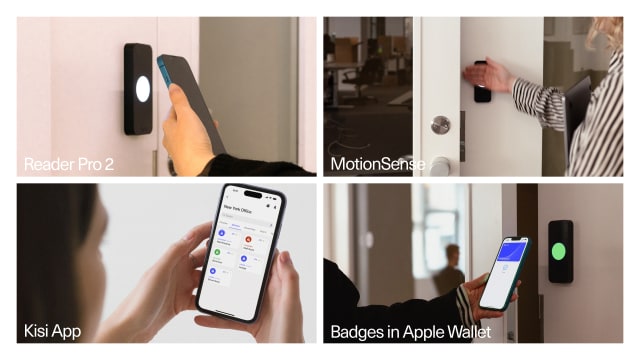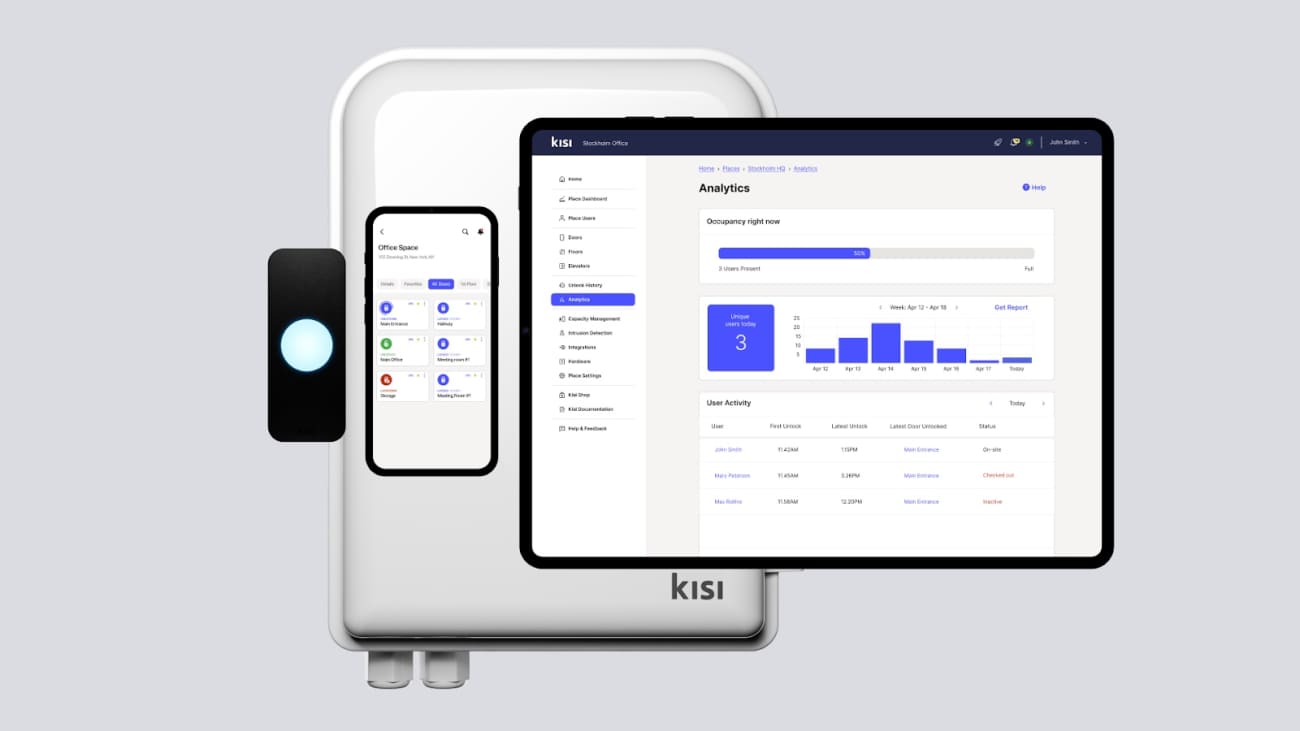Shuffling through messages for the door PIN code, awkwardly ringing the doorbell hoping to get an answer, or waiting for a key or a plastic card to get issued is not the impression modern businesses want to leave to new employees, guests, or customers. Sending an access credential via email so the credential holder can unlock your front door with a single hand wave is the first-rate experience premium access systems provide.
High-end access control is an investment for businesses that not only seek robust security but want to automate processes and show people just how much they care about them, their experiences, and convenience. Does premium access control make financial sense for your business? Read this article to learn more about advanced security systems and the costs, benefits, and ROI of implementing a premium solution.
Remote management and advanced access control are cornerstones of premium access control systems. Features that enhance security while enabling convenience and streamlining operations both on the admin and user side are the most prominent characteristics of premium access control systems. Let’s go through the features that make the difference.
Flexible credential options #
Keycards and fobs might have been the go-to commercial access control method, but mobile phones and smartwatches are quickly taking the lead. The majority of users have their phones in their hands or pockets, so using them as a reliable method to unlock doors is secure, convenient, and sustainable. Premium access systems offer vast and flexible credential options, enabling you to implement modern mobile and contactless credentials while issuing or keeping old physical credentials to accommodate different needs and users.
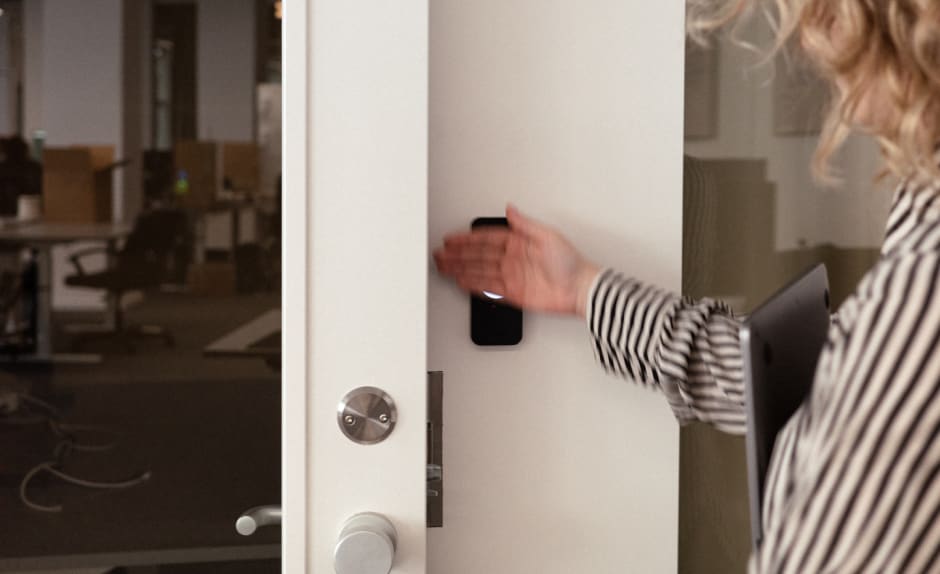
Open cloud-based platform #
Remote management is vital for modern businesses, especially considering hybrid work and occupancy rates have stabilized at around 50% in the past year. Cloud-based access control systems make it possible for admins to manage their spaces and issue credentials wherever their office is for the day, while premium access features enable hybrid work schedules.
For further customization and advanced functionalities, premium systems are structured as an open, interoperable platform. The open API and mobile SDKs, high-end systems offer, enable you to automate workflows, tailor the platform to your needs, and incorporate it in your app. Access premium systems can also unify all components so you can manage all your physical security, including video surveillance, visitor management, and intrusion detection from one security platform.
Intuitive web and mobile dashboard #
A complex, rigid dashboard that requires hours to onboard and find the functionality you need doesn’t ring premium. Premium access dashboards can not only be managed from your phone or laptop but are also intuitive, insightful, and practical.
Besides the advanced access control functionalities that enable you to prevent security threats, premium systems enable you to quickly identify potential incidents and respond with greater agility. On the data side, you get to utilize deep insights into your security operations to make data-based decisions with robust reporting and trends analysis.

Hardware and software integrations #
As open, interoperable platforms, premium access solutions offer various hardware and software integrations, making it easy to migrate to the cloud and connect and automate your existing tech stack and workflows.
The vast selection of pre-built integrations usually includes directories, security cameras, data analytics tools, visitor systems, and industry-specific software like coworking or fitness apps, enabling more control and less manual overhead.
Some premium systems, like Kisi, besides the additional security hardware like sensors, alarms, and cameras, enable you to integrate and keep your existing access hardware, including readers, controllers, wiring, and credentials.
Future-proof and scalable product #
Highly scalable systems seamlessly grow alongside your business, enabling you to add new devices, users, locations, and apps without compromising system performance or security and manage them all from a single pane of glass. They also offer tailored deployment options so you can add technology and locations at your own pace and enable you to choose and switch between the security components you need.
Premium systems assure that your web app stays up-to-date and secure, automating the update process with fully managed over-the-air (OTA) firmware updates. Regularly launched new features enable advanced functionalities, future-proofing your access control often without extra costs.
Robust data analytics #
For a complete view of your facility’s security, streamlined operational performance, and valuable insights, premium access systems offer tailored reporting. You should be able to export ad hoc or schedule advanced, customizable reports, including event and user exports, weekly place analytics, and door unlock permissions.
Businesses, especially flexible spaces, can optimize space utilization with detailed user and space analytics, such as arrival patterns, days on-site, daily presence, current occupancy rates, user behavior, and activity heat maps.
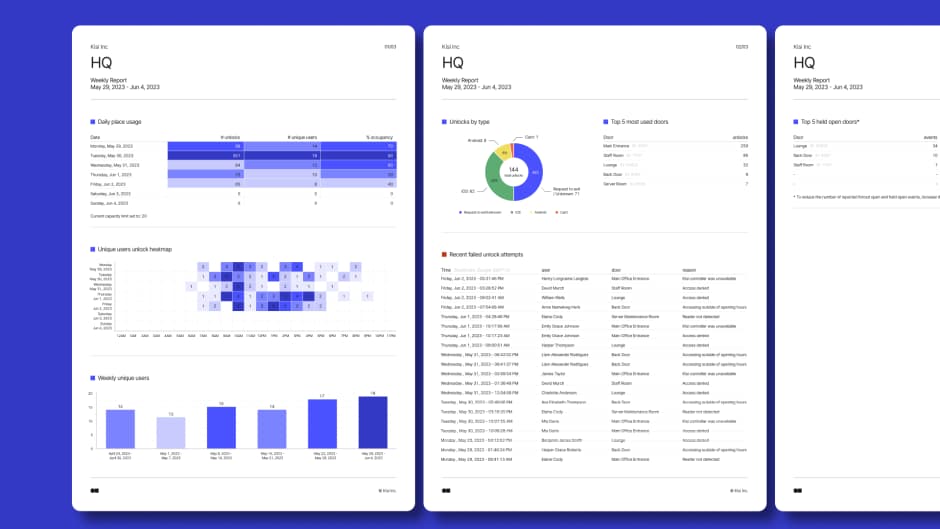
Before investing in a premium access control system, it’s essential to consider your specific security and operational needs. Start by assessing the size and scale of your business—larger enterprises or businesses with multiple locations often benefit more from high-end systems due to their complex security requirements. It’s not only the employee size you should consider. Membership-based businesses, like coworking spaces, gyms, yoga studios, and golf simulators, can streamline operations, improve member experience, and significantly increase profits by automating access control.
User and visitor traffic is an additional consideration: High-traffic locations or those with frequent visitors may need flexible credential options premium systems offer for smoother access and tighter security. Even if you don’t have a lot of users, traffic, or multiple locations, consider the sensitivity of the assets or information you need to protect. Industries like finance, healthcare, and tech often need advanced security to meet regulatory standards and protect data.
Still unsure if you need premium access control? Use the checklist below to self-evaluate and clarify if an upgrade is necessary for your business. Give one point for each question you answered with yes, sum up the points, and check out the score.
Business, user, and scalability needs
- Are you managing multiple locations, or is your business expanding quickly?
- Is your business user-dependent so non-registered users decrease your profits (e.g., non-paying members, users who tailgate)?
- Are you planning to grow and expand?
Security and compliance requirements
- Does your business operate in a high-security or highly regulated industry (e.g., healthcare, finance, tech)?
- Are there strict compliance needs, such as GDPR or HIPAA?
- Is mitigating potential emergencies or incidents important to you (e.g., intrusion detection, video surveillance, lockdown, roll call)?
Visitor and employee traffic management and experience
- Do you experience high foot traffic, including frequent visitors?
- Would advanced credentialing options, like mobile, improve convenience and security with employees, members, or guests?
- Do you operate in a multitenant building and have to use two different sets of credentials?
Automation, functionality, and operational efficiency
- Is access management currently manual or time-intensive, resulting in potential errors (e.g., on-and offboarding is not automated)?
- Is managing access remotely possible and necessary?
- Could automation and integration improve access efficiency and reduce administrative work?
Score
0-3 points: A standard access control system should likely meet your needs. A premium system may be unnecessary unless your requirements are expected to change.
4-7 points: You can consider a mid-range system with some advanced features. A fully premium system might be beneficial if you can profit from it (coworking, fitness), if your business grows, or if security needs intensifying.
8-12 points: Your business could greatly benefit from a premium access control system. The high level of security, scalability, and automation would likely support your operations effectively and provide a strong return on investment.
Investing in a premium access control system comes with upfront costs, but the potential return can surpass it even in the first quarter. Let’s break down the primary cost and benefit factors to see how the return on investment (ROI) can balance out or even outweigh the initial expense.
Initial costs #
A premium access control system typically has higher initial costs than standard options due to advanced features like mobile credentials, cloud-based management, analytics and reporting, and pre-built integrations. Let’s estimate these costs:
- Hardware and installation: For a premium system, expect hardware costs of around $1,000 to $3,000 per access point (including cloud-based controllers and mobile-enabled readers). The installation costs will depend mostly on your existing hardware. Installation with functional electronic locks already in place can cost $500 to $1,500 per door while having no locks can increase those costs to $1,200- $2,500 per door.
- Software and licensing: Many premium systems use subscription-based software, costing $600 to $1,800 per door per year. Some might charge per location or user.
- Total first-year investment: Between $2,100 and $7,300 for a door, depending on your current hardware setup and the specific features you’d want. Considering that the access controllers usually can control more than one door (e.g., the Kisi Controller Pro can manage 4), the average cost per door decreases if you add more doors. For instance, the average 20-door setup would cost $15,000 to $51,000, while 20 single-door setups would be $21,000 to $73,000.
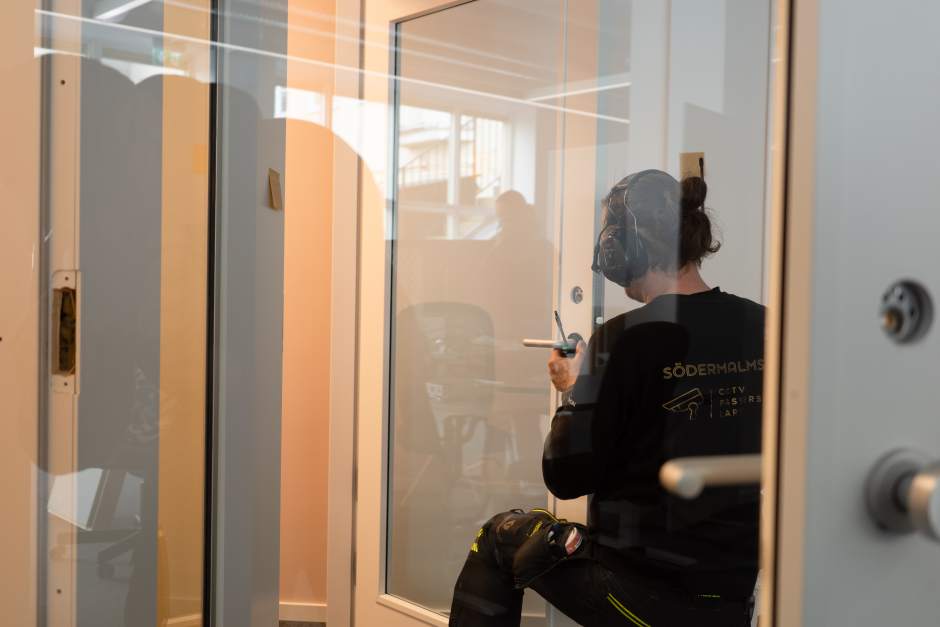
Potential returns #
The returns of premium access control systems are evident in different areas. From reduced security incidents and fines due to enhanced compliances to automated tasks for streamlined operations, all companies can expect to see immediate benefits, especially membership-based businesses like gyms and coworking spaces.
Reduced risks and incidents
- Prevention of unauthorized access: Premium systems significantly reduce the risk of theft, corporate espionage, or data breaches, which can be costly. The estimated average cost of addressing a physical security breach is approximately $100,000, while the global average cost of a data breach, according to IBM, reached $4.88 million in 2024. Smaller incidents due to unauthorized access can average $3,000 to $7,000 per incident in direct costs, not to mention reputational damage and downtimes.
Annual savings estimate: Preventing 2-3 smaller incidents per year can result in $6,000 to $21,000 in savings, and a lot more for bigger breaches.
Automation and streamlined operations
- Lowered administrative costs: Access control automation cuts down time spent by admins or HR staff issuing keys, managing credentials, or manually tracking access logs. For example, saving just 5 hours per month on these tasks at an average front-desk wage of $15 per hour equates to about $900 per year.
- Faster on- and offboarding: Automation by connecting with SSO and SCIM allows immediate, secure access for new hires or contractors and efficient offboarding, saving time and ensuring security. If you have an average of 15 on- or offboardings per year, this could mean additional savings of $1,500 annually, accounting for the time saved and decreased incident costs due to reduced human error, particularly in offboarding.
- Visitor management: Even if you only get 1 daily visitor and it takes 15 minutes for someone to announce them, set up access, note it down, etc.), you could be saving 75 hours per year, resulting in more than $1,125 per year.
Total operational savings estimate: Around $3,500 per year.
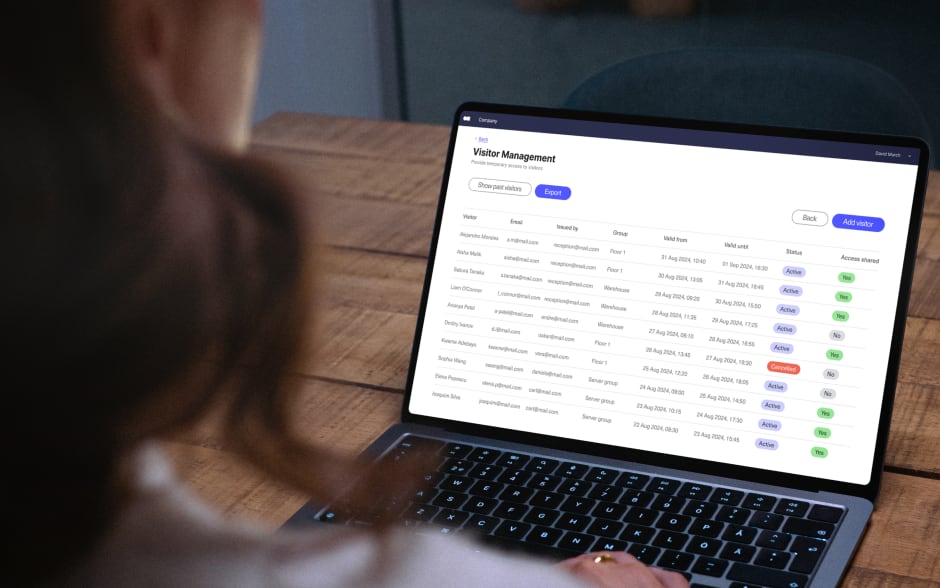
Reduced compliance fines
- Meeting regulatory standards: Many premium systems support data and privacy compliance (e.g., GDPR, HIPAA), which can help avoid fines or penalties. While HIPAA fines ranged from $141 to $71,162 per violation, the less severe GDPR infringements could result in a fine of up to €10 million, or 2% of the firm’s worldwide annual revenue.
Savings estimate: Avoiding even one compliance penalty in the range of $5,000 to $15,000 makes premium access control worthwhile.
Increased scalability
- Business growth: A premium system grows with your business, allowing new doors and locations to be added with minimal extra setup and managed remotely from a single pane of glass, reducing operational costs. Scaling up a non-premium system often means replacing equipment, which can cost an additional $1,000 per door.
- Mobile access control: Besides enabling seamless scalability by issuing digital credentials, mobile access control saves the costs associated with issuing and replacing physical credentials, like keycards and fobs. With an average cost of $5 to $15 per card or fob, you can save around $1,000 if opening a new 100-employee location.
Savings estimate: For a new 5-door location with 100 users, you can save $6,000 when scaling.
Additional revenue streams for membership businesses
- Additional locked spaces: Premium access control enables you to monetize your spaces, like meeting rooms or private offices, as part of a membership package or on-demand bookable spaces. Integrate your coworking or fitness software and get around $24,000 per year per locked space.
- Unmanned working hours: Unman your space, make it available 24/7, or offer longer working hours without increasing your staff with automated and integrated access control. You can get around $13,000 per year with only one extra working hour.
- Reduce unpaying members: Premium access control can ensure only paying members enter your space. When connected with modern video surveillance, it can detect tailgating scenarios. Assuming 5% of your members don’t pay, you can get an additional $5,000 annually.
- Tiered membership and day pass: Besides expanding and streamlining tiered membership, you could also test different offerings, such as day passes. For instance, if you sell only one day pass per day for $25, you can get $9,000 annually.
Savings estimate: Coworking spaces, gyms, yoga studios, and other membership-based businesses can add new revenue streams, resulting in an additional $50,000 per year. The added revenue depends on your business.
Running a coworking space? Use our coworking ROI calculator to see just how much you can benefit from premium access control.
ROI calculation summary #
Finally, let’s compare the total estimated savings to the costs.
- Total annual savings: $14,500 - $45,500 (From reduced incidents, reduced overhead, scaling, and compliance cost avoidance for the average company).
- First-year investment: $2,100 - $7,300 per door.
- Break-even point: Depends on the number of doors you’re securing, but most businesses should see some ROI in the first year. For instance, if you’re securing 3 doors, you can see ROI in 2-18 months, while a 10-door investment can show ROI in the first 6 months to a few years in the worst-case scenario.
ROI calculation summary for membership businesses
Due to the additional revenue streams, coworking spaces and different fitness and wellness centers can get even bigger ROI from premium access control.
- Total annual savings: $14,500 - $45,500 (From reduced incidents, reduced overhead, scaling, and compliance cost avoidance for the average business).
- Additional revenue streams: $50.000 (Use coworking ROI calculator to get the right projection for your business).
- First-year investment: $2,100 - $7,300 per door.
- Break-even point: Most membership businesses can expect ROI in the first year, but it also depends on the number of doors you’re locking and the additional services you’ll introduce. In most cases, you can expect to see a return on investment even in the first quarter.
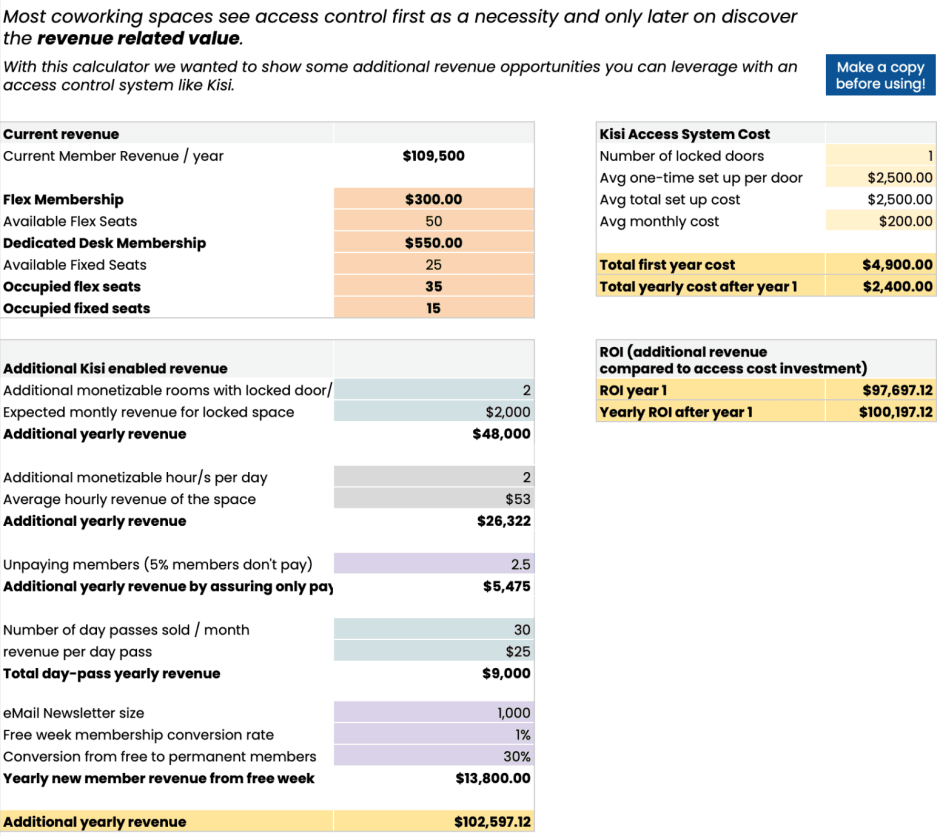
As we saw from the calculations above, an access control system can deliver significant value for most businesses. Yet, premium access control makes more sense for particular types of businesses. These are the key scenarios where investing in a premium system makes financial and operational sense:
- Membership businesses: Membership-driven models like coworking spaces, fitness studios, and private clubs thrive on convenience and automation, making premium access systems an excellent fit. These systems enable members to unlock facilities using mobile apps, automate billing and membership tier management, and offer differentiated access levels for premium plans. For example, a fitness studio might provide 24/7 access to premium members while maintaining standard hours for others.
- 24/7 businesses: Facilities operating round-the-clock, such as logistics hubs, data centers, or gyms, need secure and reliable access solutions for employees, contractors, and members at all hours. A premium system eliminates the need for constant staffing by automating access granting, revoking, and monitoring. Enhanced security features like intrusion alerts and video surveillance provide peace of mind for late-night operations.
- Global enterprise businesses: For large organizations with multiple offices or locations, a premium access control system offers centralized management and streamlined operations. With a single platform, enterprises can remotely manage access for employees, contractors, and visitors across all locations, simplifying coordination and reducing operational redundancies. Advanced analytics and unified compliance logs premium systems offer simplify reporting during audits and support compliance.
- High-security environments: Industries like technology, healthcare, and finance require strict security measures to protect sensitive data and high-value assets. Premium features such as encrypted mobile credentials, multi-factor authentication (MFA), and real-time alerts for unauthorized access attempts enhance physical security and support compliance with regulations like GDPR, HIPAA, and PCI DSS.
- Growing companies: Rapidly growing businesses often face challenges with outdated access systems that struggle to accommodate new employees, locations, or operational needs. Premium access control systems are designed for scalability, allowing companies to easily add users, doors, or locations as they expand. They also support high turnover environments by automating onboarding and offboarding processes, ensuring smooth and safe transitions as the workforce evolves. Investing in a scalable solution eliminates the need for costly overhauls, ensuring the system grows alongside the business.

- Compliance-dependent businesses: For industries that undergo frequent audits or are subject to strict regulations, premium access systems provide essential tools for compliance. Detailed access logs and robust reporting capabilities make it easy to demonstrate compliance with standards like GDPR or HIPAA, reducing the administrative burden and minimizing the risk of fines or legal issues due to inadequate access controls. Businesses in these environments can confidently pass audits and maintain their reputation, all while ensuring secure operations.
- Unmanned spaces: Premium access systems are an ideal solution for partially or fully unmanned spaces, such as remote warehouses, small retail locations, coworking spaces, and fractional offices. Automating access control and enabling remote management, they eliminate the need for on-site staff while maintaining tight control over who enters and exits the premises. With features like mobile credentials, real-time activity logs, and integration with surveillance cameras, businesses can ensure their spaces' security and traffic flow even when no staff is present. This setup is especially valuable for businesses looking to reduce operational costs without compromising on security or functionality.
Overcoming implementation challenges #
While the benefits of premium access control systems are clear, some implementation hurdles are expected. With the right system, strategies, and preparations, you can effectively overcome these challenges, ensuring a smooth transition and a successful investment in security and operations.
- Higher initial investment: Premium access control systems typically have higher upfront costs than standard solutions. Expenses can include hardware, such as premium readers and controllers, software licenses, and integration fees. These costs can quickly add up if you’re securing multiple doors or facilities. Careful ROI calculations and phased implementation can help mitigate the initial financial burden.
- Integration complexity: Integrating a premium access control system with existing infrastructure, such as video surveillance, alarms, visitor management, or coworking software, can be technically complex. Choosing an open, interoperable platform like Kisi with open API supports compatibility between systems and custom development to achieve seamless functionality.
- Learning curve for users and admins: Advanced features, such as mobile credentials, multi-factor authentication, and automated workflows, can present a learning curve for both administrative staff and end-users. Employees and tenants may require training to use mobile apps or navigate new access protocols. User-friendly systems, like Kisi, can help reduce onboarding times and potential resistance and confusion during the transition.

- Maintenance: Premium systems can require regular maintenance to ensure peak performance and security. This includes software updates, hardware servicing, and periodic security audits. For businesses without in-house IT support, relying on external vendors for these services can increase operational costs. Choosing a cloud-based system, like Kisi, can help automate updates and reduce maintenance burdens.
- Dependence on internet connectivity: Many premium systems, especially cloud-based ones, rely heavily on stable internet connectivity to function effectively. Outages or weak connections can disrupt operations, potentially leaving users locked out or compromising security. Implementing backup systems, such as local access overrides or redundant internet connections, can help businesses address this challenge. Some premium systems, like Kisi, ensure uninterrupted access with fully encrypted and authenticated offline support for physical and mobile credentials.
- Resistance to change: Adopting a premium system often involves significant changes to existing processes, which can face resistance from end-users or other stakeholders. Concerns over privacy, increased monitoring, or the perceived complexity of the system may lead to pushback. Choosing a modern, user-friendly system, engaging stakeholders early, addressing their concerns, and demonstrating the benefits can help build buy-in.
- Balancing costs with ROI: Although premium systems offer long-term savings and efficiency, achieving a positive ROI may take time, especially for smaller businesses. Factors such as the size of the organization, the number of doors secured, and the frequency of access events can influence the timeline. Businesses must carefully evaluate their specific needs and financial projections to determine if the investment aligns with their goals.
From enhanced security to streamlined operations and new revenue streams, most businesses can benefit and see the ROI of premium access control systems in the first year of operation. The usual implementation challenges, such as upfront costs, integration complexity, and user adoption, can be effectively managed with the right, interoperable system that will facilitate the strategic and planning phase.
If you’re a business that is in a growth phase or looking to scale and prioritize compliance, modern security needs, and seamless user experience, like most coworking, fitness, healthcare, or finance organizations, a premium access control system is not just an upgrade but a strategic investment. Get in touch with our security experts to start benefiting from premium access control, or consult with them on whether it’s the right solution for your business.

Vera Eftimovska
Marketing Campaign Manager at Kisi, blends her psychology background with hands-on experience in access control and workplace security. Passionate about how technology and human behavior intersect, she shares insights that help businesses build resilient, future-ready, and security-driven workplaces.
